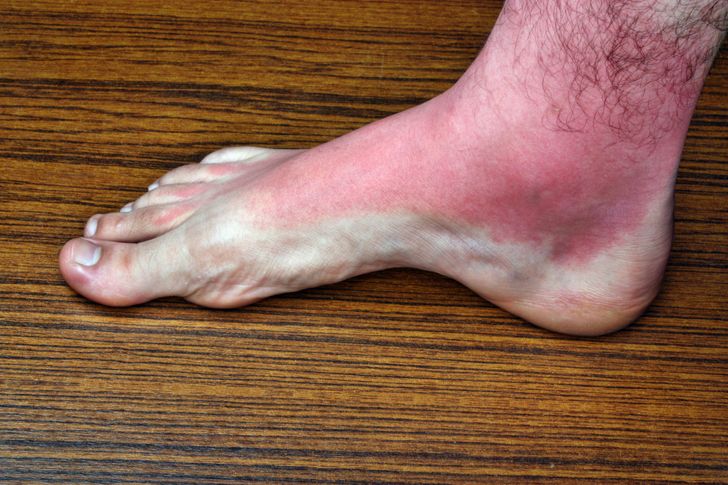Blood clots are clumps of blood that have changed from a liquid state to a gel-like one. They generally do not harm your health as they protect your body from bleeding when you cut. However, when blood clots appear in deep veins, they can be extremely dangerous.
The dangerous type of clot is called deep vein thrombosis (DVT), and it can cause”traffic jams” in your blood circulation. There can also be very serious consequences if a blood clot breaks away from where it appeared and travels to the lungs or heart.
We have rounded up the most prominent signs to look out for in order to recognize DVT symptoms as quickly as possible.
Signs of a Blood Clot
6. Red Or Dark Discoloration On A Leg

Red or dark spots on the skin that appear for no reason can be a symptom of a blood clot in the leg. You may also experience tenderness and warmth in that area and even pain when stretching your toes upward.
5. Arm Or Leg Pain

Although it is usually necessary to have several symptoms to diagnose DVT, the only sign of this serious disease that you may have is pain.
The pain from a blood clot can easily be mistaken for a muscle cramp, but this type of pain occurs most often when you walk or flexing your feet upward.
4. Swelling In A Limb

If you suddenly notice that one of your ankles has become bloated, it may be a warning sign of DVT.
This condition is considered an emergency case as a clot may break free at any minute and reach one of your organs.
3. Red Streaks On Your Skin

Did you notice red streaks appearing along your veins? Do you feel warm when you touch them? It may not be a normal bruise and needs immediate medical attention.
2. Vomiting

Vomiting can be a sign of a blood clot in your abdomen. This condition is called mesenteric ischemia and it is usually associated with severe pain in the abdominal region.
If your intestines are not getting enough blood supply, you may also experience nausea and even blood in your stools.
1. Partial Or Complete Blindness In An Eye
Painless vision loss in one eye is often a sign of central retinal artery occlusion. It is considered a serious medical emergency, especially if you have additional symptoms such as dizziness and trouble keeping your balance.
If you notice any of these signs, see a doctor as soon as possible. Remember that a blood clot can be fatal if it is not treated properly and immediately.


